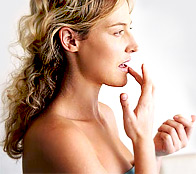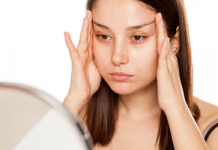 Lips are extremely sensitive body part because they have high congestion of nerve endings. It explains both why kissing is pleasure and why our lips may become painful in cold season. As there are no sebaceous glands in the lips, they are poorly moisturized and lose their allure. Your lips may become dry, cracked and sore; you may even experience unbeneficial changes in their color and shape.
Lips are extremely sensitive body part because they have high congestion of nerve endings. It explains both why kissing is pleasure and why our lips may become painful in cold season. As there are no sebaceous glands in the lips, they are poorly moisturized and lose their allure. Your lips may become dry, cracked and sore; you may even experience unbeneficial changes in their color and shape.
You can also get a condition scientifically called cheilitis (inflammation of the lips). It develops mostly due to bad climate (strong winds, lowered air humidity, etc.) However, the inflammation may be triggered by stresses, allergies to a lipstick or toothpaste, UV-light and vitamin deficiencies.
Moisturize the Lips
Your lips should be moisturized around the clock. It is recommended to wear a hygiene lipstick under your cosmetics lipstick. It helps protect lips from drying and cracks.
Lip balm makes a perfect care for the lips in cold and windy seasons (it would be great if you had a balm formula with hyaluronic acid). The balm provides hygienic and healing effects. It does nourish, moisturize, protects from wind and frost, give the lips a natural gloss and elasticity, heal up cracks and sores.
No Lip Makeup in Winter
It is better to cut down on beauty lipstick use in cold season. Coloring agents in lipsticks fret at sores, exposing the lips to inflammation. If you can’t help using your favorite lipstick, make sure you apply hygiene one first. Lips gloss is certainly a bad idea as low temperatures make it thicker, which causes dry lips.
Avoid Long Lasting Lipstick
You should be careful about using long lasting lipsticks, too. Since they don’t have any moisturizers, these lipsticks dry your lips even more. In addition, their formulas contain components and coloring agents which clog the pores. It results in suffocated and dehydrated lip skin. Therefore, use long lasting lipsticks for special occasions only. Before bed, remove lipstick with herbal cleanser or alcohol-free tonic and apply something to nourish them.
Know Your Beauty Products
Study the labels of beauty products for lips you are going to use – in winter, you don’t want the formulas with glycerin, petrochemicals, alcohol and menthol. Stay away from skin creams with drying effect as it may affect your lips. The products which contain bensoperoxide, salicylic acid and retin A are particularly dangerous.
What Causes Cracked Lips?
If disastrous condition of your lips is caused by allergy, stop using allergy-causing products immediately. It may be a cinnamate in toothpaste and oxybenzone in sunscreens, including lip balms with UV-protection.
Home Remedies for Cracked Lips
Besides modern cosmetics, you can also resort to home remedies, though they are less effective. Anyway, use vegetable oil (olive oil is even better) for softer lips. Chapped and dry lips need honey, cucumber juice and sea buckthorn oil.
Homemade Masks to Prevent Cracked Lips
Make lip masks few times a week. There is a wide range of ingredients you can use for your mask: cottage cheese and cream; grated apple and milk; honey; olive oil and beet juice.
Watch Your Diet
Applying masks and beauty products is not enough for healthy lips. You have to follow the right diet. Fatty and spicy food as well as alcohol is strictly excluded. Drink 1.5-2 liters of water every day. Enrich your diet with red meat, oatmeal, nuts, fresh vegetables and fruit. Above-mentioned diet is an excellent source of vitamins A, E, K and group B.
Don’t forget about diary products. Ferments and bacteria in salvia may trigger cracks in the corners of the mouth. Milk provides elements neutralizing these bacteria.
Licking Lips Habit
The nervous habit of licking your lips may also get bacteria to them. Besides, as the moisture evaporates, your lips will become drier. If you have this bad habit, apply bitter castor oil or aloe juice to the lips and your habit disappears as if by magic.
If you’ve provided the proper care for your lips, but the problems won’t go away, consult dermatologist. The reason may be autoimmune disorders or infectious diseases like cold sores, bacterial affections or candidosis.
Source of the image: .methodsofhealing.com










